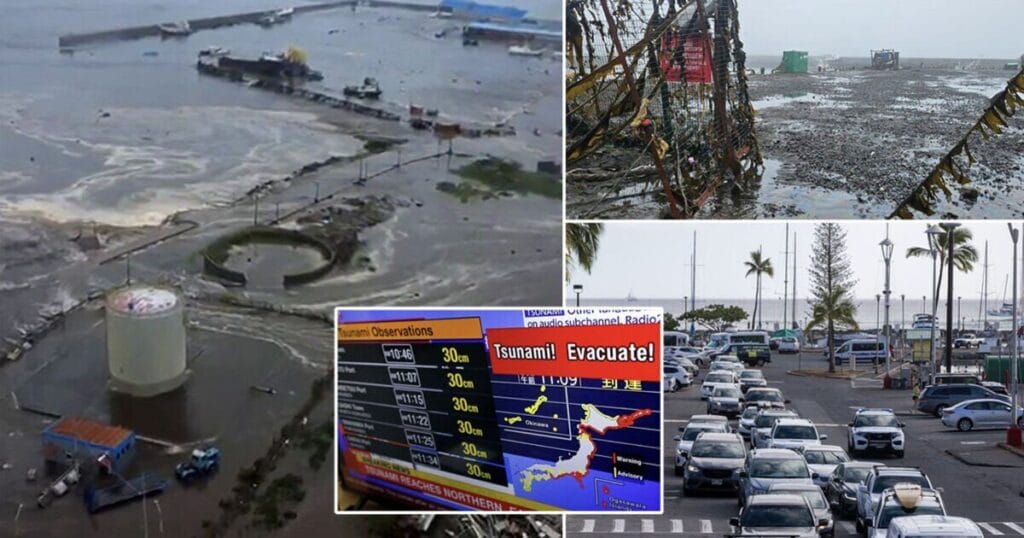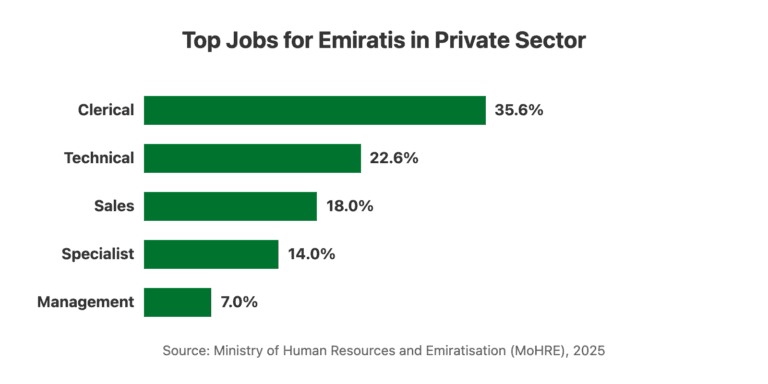
A powerful 8.8 magnitude earthquake struck off Russia’s far eastern coast early Wednesday, sending tsunami waves across the Pacific Ocean and forcing millions to evacuate. The tremor—tied for the sixth strongest ever recorded—hit near the remote Kamchatka Peninsula at 11:25 local time.
Breaking: First Waves Hit Multiple Countries
Tsunami waves have already reached Hawaii, California, Japan, and Russia’s coastline. Hawaii’s governor reports no “wave of consequence” and no damage so far, but officials remain cautious as conditions continue to evolve.
The waves arrived faster than expected in some areas. In Japan, wave heights ranged from 30 centimeters to 1.3 meters—much smaller than the initially feared 3-meter waves.
Table of Contents
Millions Evacuated Across Pacific Rim
The massive quake triggered one of the largest evacuation efforts in recent years:
Japan: Over 2 million people were ordered to higher ground across 21 prefectures. Videos showed residents taking shelter on rooftops in Hokkaido as sirens blared.
Hawaii: Emergency shelters opened across all islands. Traffic jams clogged evacuation routes as residents fled coastal areas. The first waves hit around 7:17 p.m. local time Tuesday.
California: Beaches from San Diego to the Oregon border remain under advisory. Crescent City saw waves over 3 feet—the highest on the US West Coast so far.
Russia: Nearly 300 people evacuated from the port town of Severo-Kurilsk, where storage containers and boats were swept away by surging water.
Why This Earthquake Was So Dangerous
This wasn’t just about size—though 8.8 magnitude puts it among history’s strongest quakes. Two factors made it particularly threatening:
Shallow depth: At just 20.7 kilometers below the surface, the quake’s energy didn’t have far to travel before hitting the seafloor.
Underwater location: The rupture displaced massive amounts of ocean water, creating the tsunami waves that spread across the Pacific at jet-like speeds.
Dr. Stephen Hicks from University College London explained: “For such large earthquakes, the fault will have ruptured over many hundreds of kilometers. It is this vast amount of slip and area of the fault that generates such a high earthquake magnitude.”
Latest News
- Hiring Now: Accountant (UAE Experience Required) at Elite HR Consultancy in Dubai
- Dubai’s Biggest Visa Fraud Bust: 161 People Hit with Dh152 Million in Fines
- UAE temporarily halts visas for citizens from these 9 countries. Bangladesh on the list — Check details
- Hiring Now: Finance Manager at InZone in Dubai
Shocking footage emerges
Social media videos showed furniture violently shaking inside homes and alarms sounding at seismic centres. Buildings swayed, but no casualties have been reported so far.
Tsunami warnings were issued across the Pacific, including Hawaii, Japan, and the U.S. West Coast
— Sumit (@SumitHansd) July 30, 2025
Scary, Videos showing the shaking from the M8.7 earthquake that hit off the coast of Kamchatka, Russia #earthquake #tsunami #Russia #Japan #Hawaii #Alaska pic.twitter.com/dAZY8dpsIF
Drone footage shows flooding in Russia
Drone footage reveals tsunami flooding in Russia’s Severo-Kurilsk following a powerful 8.8-magnitude earthquake near Kamchatka Peninsula. The quake, one of the strongest recorded, triggered waves up to four metres across the Pacific, prompting evacuations from Hawaii to Japan.
❗️Huge List Of Warnings & Advisories Reveals Severity Of #Tsunami Following Massive M8.7 Earthquake Hit Kamchatka
— RT_India (@RT_India_news) July 30, 2025
🇷🇺 Russia (Kamchatka, Kuril Islands)
🇯🇵 Japan (coastal regions: Hokkaido, Pacific coast)
🇺🇸 United States
– Hawaii (warning)
– Alaska (Aleutians, warning/advisory)… pic.twitter.com/pcbubiqBkF
Early Warning Systems Saved Lives
The threat of massive waves has largely passed in Japan, the US and Russia, thanks partly to improved tsunami warning networks that weren’t available during the devastating 2004 Indian Ocean tsunami.
Countries had hours of advance warning, allowing for:
- Mass evacuations from coastal areas
- Harbor closures and ship diversions
- Emergency shelter preparations
- Public safety alerts via phones and sirens
In one dramatic scene, doctors in Russia’s Kamchatka region continued performing cancer surgery even as the building shook violently around them. The patient recovered successfully.
Current Status: Warnings Downgraded
As of Wednesday afternoon:
Lifted: Most tsunami warnings in Japan, Hawaii, and the US West Coast have been downgraded to advisories or canceled entirely.
Still Active: Authorities ordered evacuations on Pacific islands of Ecuador and Chile, including the Galápagos Islands.
Monitoring Continues: Officials warn that dangerous currents and smaller waves may persist for up to 24 hours.
What Made This Different from Past Disasters?
Unlike the catastrophic 2004 Indian Ocean or 2011 Japan tsunamis, this event caused relatively minor damage despite its massive size. Several factors explain why:
Geographic luck: The earthquake’s energy was directed more toward the open Pacific than nearby populated areas.
Better preparedness: Advanced warning systems gave people time to evacuate safely.
Depth variations: While shallow overall, slight depth differences may have reduced the tsunami’s intensity in some areas.
Seafloor geography: Underwater terrain can amplify or diminish wave energy as it travels.
Aftershocks Continue to Rock Region
The Kamchatka Peninsula continues experiencing powerful aftershocks, including:
- A 6.9 magnitude quake 45 minutes after the main event
- Over 125 aftershocks of magnitude 4.4 or greater
- A volcanic eruption at Klyuchevskaya Sopka, Eurasia’s highest active volcano
Scientists expect aftershocks to continue for weeks, following the typical pattern of about 100 magnitude 5.0+ tremors after an 8+ earthquake.
Pacific Ring of Fire Remains Active
This earthquake highlights the ongoing seismic risks along the Pacific Ring of Fire, where 80% of the world’s earthquakes occur. The Kamchatka region has a history of major quakes—a similar 9.0 magnitude event struck just 30 kilometers away in 1952.
The area sits where the Pacific plate slides beneath the smaller Okhotsk plate at about 8 centimeters per year. When these massive plates get stuck, they can suddenly release thousands of years of built-up pressure in just minutes.
Read more: Nimisha Priya Case: Confusion Over Kerala Nurse’s Death Sentence Status in Yemen
What Happens Next?
Emergency officials across the Pacific continue monitoring conditions as the immediate crisis passes. Key priorities include:
- Assessing damage in affected coastal areas
- Maintaining evacuation orders where necessary
- Monitoring for additional aftershocks
- Preparing for potential secondary waves
For residents in affected areas, authorities stress the importance of staying away from beaches and harbors until official all-clear signals are given.
The earthquake serves as a stark reminder of the Pacific’s seismic power—and how crucial early warning systems have become in protecting millions of lives along its rim.
Read more: How UAE Residents Can Win Dh1 Million with 4 New Scratch Cards (UAE Lottery Scratch Cards – 2025)
This is a developing story. Check local emergency services for the latest evacuation orders and safety information in your area.





